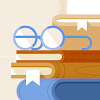Learn HTML for Beginners: The Ultimate Step-by-Step Guide
In today's digital age, understanding how websites are built is an incredibly valuable skill. Whether you're looking to become a web developer, start a blog, or simply understand how the internet works, learning HTML is the perfect first step. HTML, which stands for HyperText Markup Language, is the foundation of every web page. If you’re a complete beginner, don’t worry—this guide will help you understand the best way to learn HTML for beginners, step by step, without overwhelming you.

What is HTML and Why Should You Learn It?
HTML is the language that structures content on the web. Every text, image, button, or form you see on a website is made possible with HTML. It tells the browser what to display and how to display it. Without HTML, the internet would be a blank canvas.
For beginners, learning HTML can open doors to many opportunities. Not only does it provide the groundwork for web development, but it also helps improve your digital literacy. Knowing HTML empowers you to make changes to websites, understand how digital content works, and even build your own web pages from scratch.
Step 1: Understand the Role of HTML in Web Development
Before jumping into the details, it’s helpful to know where HTML fits in the bigger picture. HTML provides the structure of a website. It works alongside CSS (which controls style and design) and JavaScript (which adds interactivity). Think of HTML as the skeleton of a webpage—it gives everything its basic form.
When you're just starting out, your focus should be on mastering the structure that HTML provides. This includes learning how content is organized and how elements are placed on a web page.
Step 2: Get Familiar with HTML Terminology
To learn HTML for beginners effectively, it’s important to become comfortable with common terms. These include:
1. Elements: The building blocks of HTML. Everything you see on a page is made up of elements.
2. Tags: Markers used to define elements. Tags usually come in pairs: an opening tag and a closing tag.
3. Attributes: Provide additional information about an element, such as size or color.
4. Content: The actual text or image that appears between tags.
Understanding these concepts helps demystify how HTML works and makes it easier to learn more advanced concepts later.
Step 3: Learn the Structure of an HTML Page
Every HTML page follows a basic structure. While we won’t use actual code in this guide, it’s essential to know that an HTML document has a beginning, a middle, and an end. The top of the page tells the browser that the content is written in HTML. Then there’s a section where background information about the page is stored (like its title), and finally, the main body contains everything you see on the screen.
Recognizing this layout is crucial to learning how to build and organize content properly.
Step 4: Practice Organizing Content
One of the best ways to learn HTML for beginners is to start thinking about how you’d organize different types of content. Imagine you're creating a simple web page. What kind of information would it include? Perhaps a title at the top, a paragraph introducing yourself, and a few images or links.
Try sketching this out on paper. Think about how each piece of content fits together. This exercise builds the logical thinking needed to understand HTML's structure and flow.
Step 5: Build Your First Page (Conceptually)
Without needing any code or tools, imagine putting together a basic webpage. Start with a title at the top. Below that, include a short paragraph describing the page. Add a section for images, perhaps a list of your favorite books or movies, and maybe even a contact section at the bottom.
Visualizing your first page helps reinforce how HTML organizes content and prepares you for when you actually start writing it out.
Step 6: Reinforce Your Learning
Consistency is key. To truly learn HTML for beginners, spend a few minutes each day reviewing concepts and imagining how different websites are built. Look at pages you visit often and ask yourself: How is this content structured? What parts would HTML control?
You’ll soon start seeing patterns and understanding how web pages come to life.
Final Thoughts
Learning HTML doesn’t require a background in programming or any technical experience. It’s a simple, logical language that anyone can learn with time and patience. The best way to learn HTML for beginners is to take it one step at a time—understand the structure, learn the key concepts, and start thinking like a web designer.
With dedication and practice, you’ll be well on your way to building your own websites and understanding the web in a whole new light. So if you're ready to dive into the world of web development, start with HTML—it’s the essential first step.
